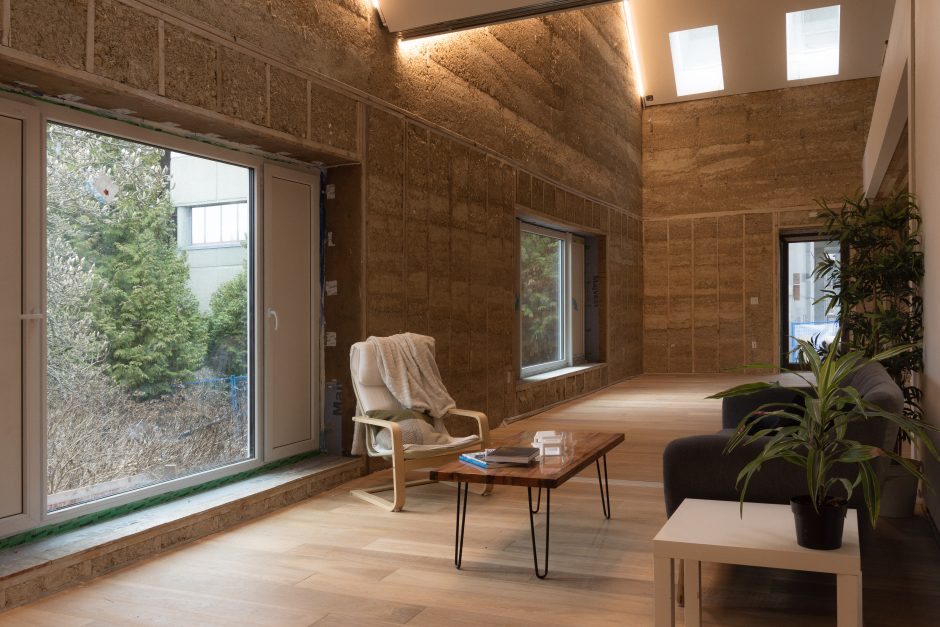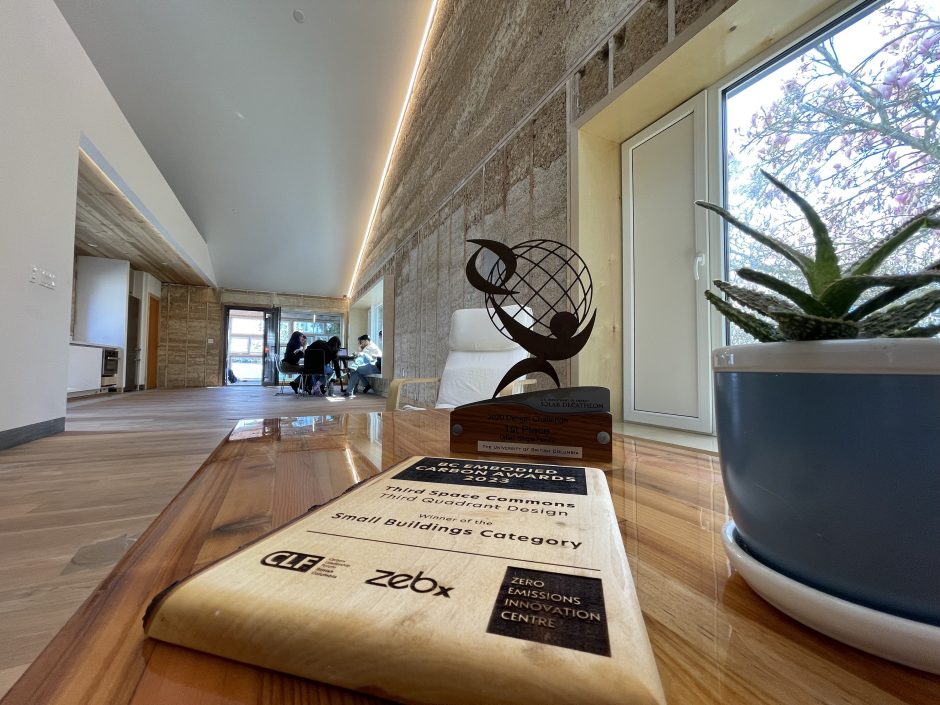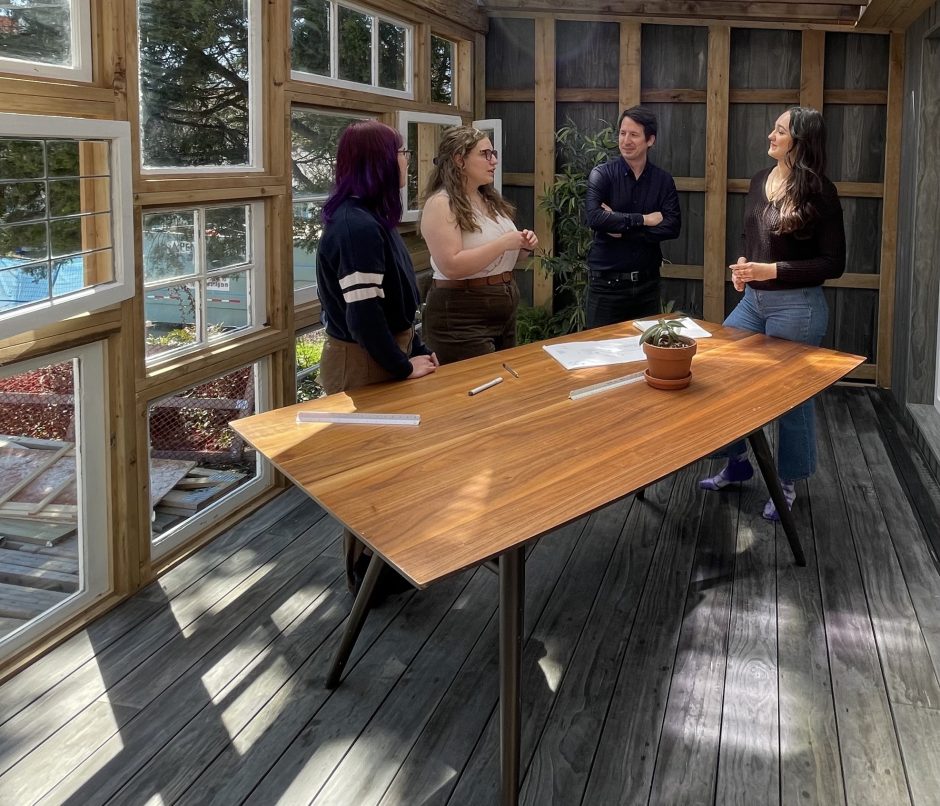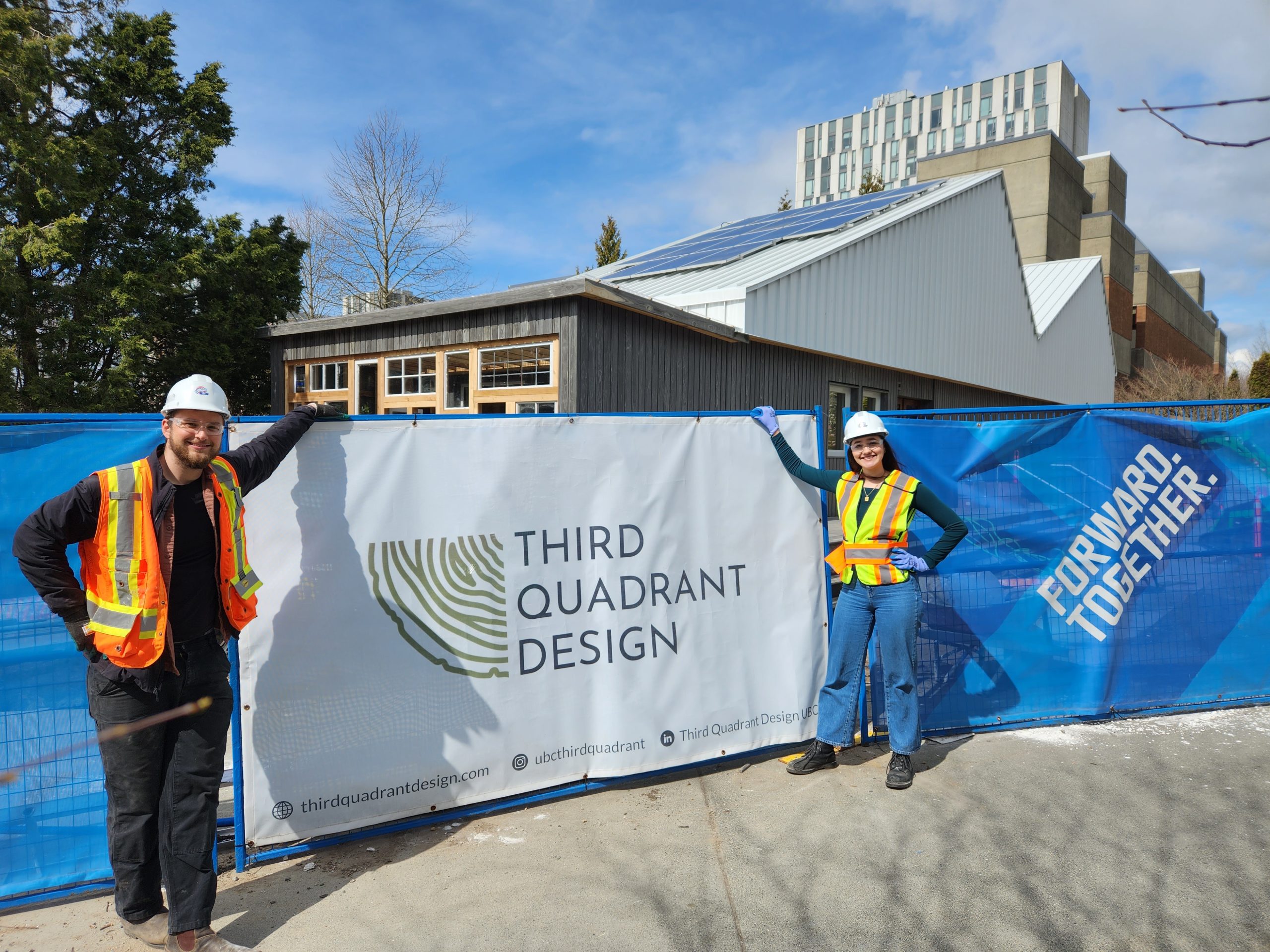Last week, Third Quadrant Design welcomed students into a vibrant new teaching and learning space, called Third Space Commons, which is one of Canada’s first institutional spaces designed to be near-zero embodied carbon. It’s also the first such building designed by students from different disciplines, including 2 civil engineering students – Peter Ehrlich and Agustina Flores Pitton.
Third Quadrant Design, a 60-member student engineering design team with members across UBC disciplines, managed the project from conception through to completion, assembling a group of supportive industry partners who provide mentorship and guidance.
In our recent interview, Peter and Agustina, the Co-Captain Construction and Co-Captain Engineering respectively of Third Quadrant Design, shared their experience collaborating with other students and industry partners, working on a hands-on construction project and how it has influenced their career aspirations in civil engineering. Below is the interview:
Can you tell us a little bit about yourself?
Peter: I am a 7th year civil engineering student. My focus is more on project management and this is my third year on the team.
Agustina: I am a fourth-year student. So I haven’t technically specialized yet because I haven’t taken my technical electives, but I’ll be more on the structural side of things. I also joined three years ago—the same time as Peter. I started as a structural team lead in my second year here.
What factors did you take into consideration when planning the construction of this space?

Agustina: We have a couple of key design principles that we set up at the beginning that are consistent throughout all of our disciplines. The main ones for us were carbon minimalism and system minimalism. If we could keep our systems minimal, then we could get to as close to net zero in embodied carbon as possible. Another principle we had was flexibility and adaptability. As we are currently living in this climate crisis, it’s really important to design spaces that are flexible for different needs and different uses and different climate conditions. So that paired really well with our next principle, which was resilience. Our building has been designed for seismic resilience and different weather events. And the final one is what we’re calling the living lab. As we designed everything we tried to integrate sensor and different monitors to allow students and future researchers to monitor this space and to also be able to integrate their own technologies and test them in the future.
So you’re talking about reducing embodied carbon by sourcing and reusing materials from other existing buildings. What is the process of that?
Peter: With plenty of materials that were reclaimed and reused, some of those were celling and underneath this bulkhead, the reclaimed lumber for the red cedar. It came from a company called Heritage Lumber and it’s a sister company of Unbuilders. So they go in and deconstruct homes and take the materials from these homes and heritage lumber mills and materials down so they can be used somewhere else. The major portion of the materials of this building is from reclaimed and reused materials, including the windows in the solar room and the solar panels on the roof.
Are there any significant changes from the initial design to the current design of the building?
Agustina: At one point we had a completely different architectural layout. We had what is called the “J” when we originally got this site. Which was kind of going to be a loop around, and then for a bunch of different reasons, we ended up changing it. As you can see now we kind of have this sawtooth group. This helps us with passive ventilation and passive lighting.
What have you learned from collaborating with industry partners and students from different disciplines?
Agustina: I think one of the biggest lessons is how to effectively communicate with each other because we speak different languages in different disciplines. Peter and I, we can understand each other pretty well because we come from an engineering background. I think interdisciplinary collaboration also requires a lot of adaptability, because sometimes there’s going to be things that you want, and sometimes it’s going to be different from what someone from another discipline wants. Since we were trying to have an integrated design process and wanted everybody involved from the beginning, it’s really important to have different perspectives on things and not just look at something from just a structural or civil engineering perspectives.

Courtesy of UBC Applied Science
What kind of advice would you give to yourself in the beginning of this project and your peers in a similar role to you in the future?
Peter: One big thing for me is coming into this, I was pretty close-minded and I had one or two ideas and a process in mind. I thought this is exactly how it is going to work. But along the way, there were a lot of changes that I had to adapt to. So if I could change anything, I would chose to come in with more of an open mind and be ready to adapt.
Agustina: I think a big thing overall is this is a student team and we’re doing all of this on a volunteer basis. I know all of us have put in so many hours on this project. I think it would have been great if we could have gone into this with more empathy. This is such a unique project and I think that over the cycle of this building, we have built such close friendships with each other. Having close relationships on this team has allowed us to be this successful.

Are there any differences between the theories you learned in class about civil engineering and this hands-on project?
Agustina: Even if you understand or think you understand the engineering principles of how something works, it goes so beyond that when you’re actually constructing something, because constructability is really the key of all of this. It’s all in the details. I think that that’s something that we didn’t realize as much going into it and that’s why it was so essential to have partners who have experience on construction sites to be able to help us with that.
Peter: Just on the project management construction side, there’s a lot more coordination and communication that happen on sight, which is not really teachable in the classroom. I mean, we can try to learn in class with group projects and such. But when you’re in the industry, there are a lot of higher stake tasks that you are actually dealing with.
How has this project influenced your career aspiration as a civil engineer?
Peter: Going into this project, I was on the fence between structural and project management. So this project definitely solidified my choice on construction project management. Having this hands-on experience definitely makes you a lot more hirable going into the industry afterwards.
Agustina: I think for myself, it’s only reaffirmed the fact I love working in the construction industry and I love seeing something tangible at the end of the day. I realized that structural engineering is kind of the discipline I want to specialize in, and I’ve gotten a lot of obviously amazing hands-on experience doing the actual calculations for this building that we’re sitting in today.
TQD was founded by women and is currently comprised of 60% female member, so Agustina, what is your experience being a female civil engineer on this project and general?
Agustina: It was definitely something that scared me because engineering is already very male-dominated. But I could say I’ve had very few negative experiences, if at all in general. It’s really satisfying to see how much the industry has changed, definitely to a more open and positive environment for women and for more diversity. I think it’s been so lovely to work on a team that cares about improving the visibility of women in engineering, and I can say that comes both from other women as well as the men that I’ve worked with on the team. I think a big thing being a woman in engineering is that, it can kind of come from a place of confidence. I think it would be scary to think people might not respect me because I’m a woman when I walk into a construction site. All of the lessons and experience that I have gained from this project have really helped me grow as a confident future engineer and has given me the ability to know my worth and know that you know there’s a place for me.
